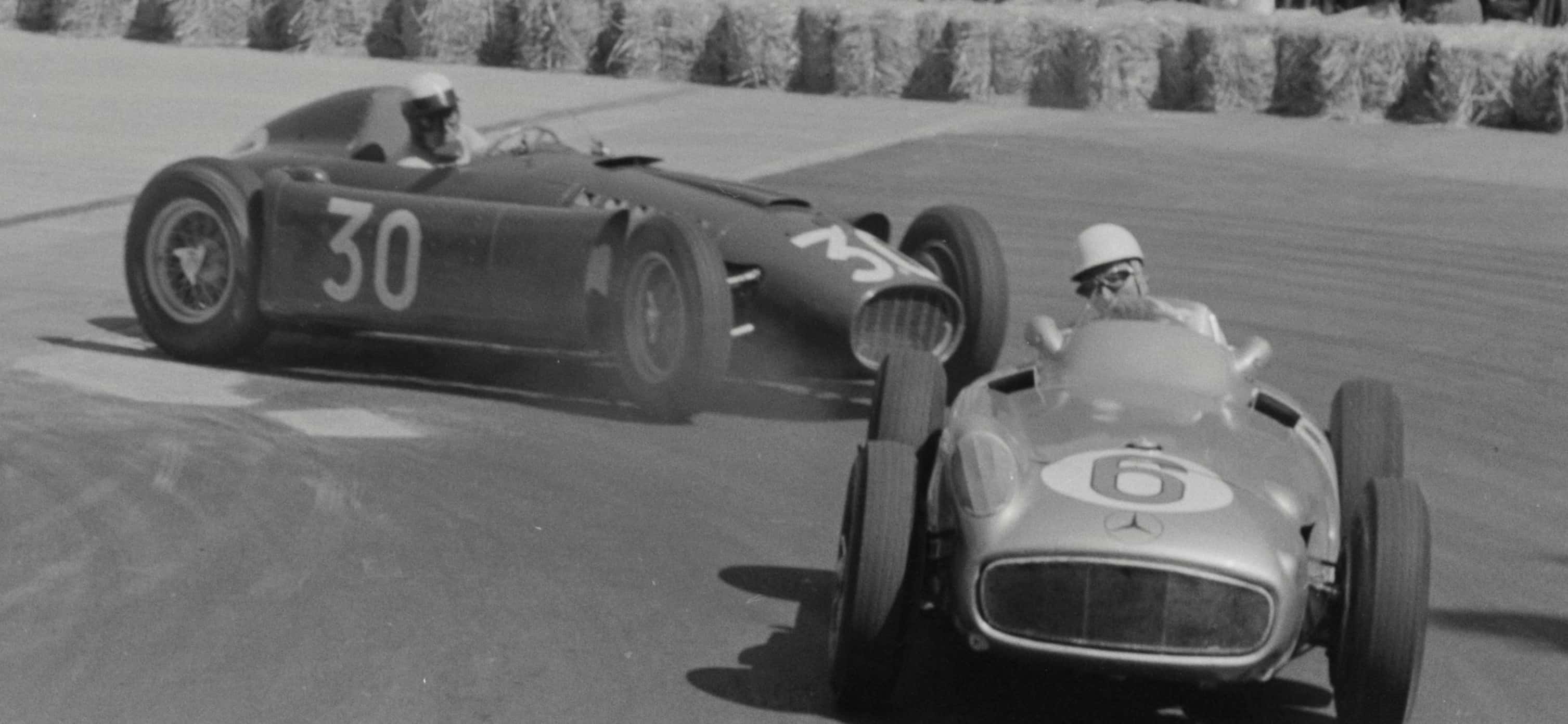
The Revs Institute (nee Collier Collection) has opened its first multi-media exhibition — The Rivals: A Golden Moment in Grand Prix History. The exhibit features the Institute’s own Lancia D50 and the Mercedes-Benz W196 on loan from the Indianapolis Motor Speedway Hall of Fame museum.
The subtitle for the exhibit is David vs. Goliath with the Lancia playing the role of the underdog to the mighty Mercedes effort during the 1954-55 Grand Prix racing season.

“Their battle represents one of the golden moments in racing history,” the museum said in announcing the new exhibit. “This epic story comes to life through words, display cases, period images, and video and sound, creating a multi-media experience of superb quality.”
“This intimate exhibit is part of Revs steady approach to bring forward its belief that the automobile is the most important technological object of the 20th century,” said Scott George, Revs vice president. “Whether the visitor’s interest lies in history, technology, visual appeal, racing personalities, plain curiosity, or simply being in the presence of greatness, The Rivals exhibit offers a unique educational experience.”
Writing for the Institute, automotive historian John Lamm notes that, “Having recovered sufficiently from World War II, Mercedes-Benz began racing sports cars in 1952 and by 1954 was ready for Grand Prix competition. That year would bring new Formula 1 rules calling for 2.5-liter (153.5 cubic inches) unsupercharged or 750-cc supercharged engines.
“Not surprisingly, Mercedes’ entry, the W196, was a technical triumph. Inside the latticework of its space frame was a twin-cam straight-8 engine laid to one side to lower the car’s height. Unusual features of the engine were Bosch fuel injection and desmodromic valves that were mechanically closed. While the W196 had conventional open-wheel bodywork for most races, it could be fitted with a beautifully streamlined, aerodynamic closed body hand-formed from magnesium-elektron alloy sheet. Mercedes built 15 W196 machines and the massive expenditure was obvious.
“By contrast to huge Mercedes-Benz, Lancia was family owned and operated. Yet the Italian’s desire to create a winning Grand Prix car was no less than the Germans. (Vittorio) Jano’s design was compact, made more so visually by those pannier fuel tanks. Inside the car’s lightweight frame, the 2.5-liter 90-degree V8 was a gem. It featured two camshafts per bank and was topped by four twin-throat downdraft carburetors. The gearbox was at the back and the drivetrain set low and angled to lower the driver’s seat. The engine not only provided power but also doubled as a front-end chassis stiffener.

“Like the W196, the D50’s construction breathed quality and as with the German car that quality was costly… and David’s downfall.
“Mercedes debuted the W196 at the 1954 French Grand Prix on the fast Reims circuit fitted with the aero bodywork. They stunned the opposition. Juan Manuel
Fangio and Karl Kling finished 1-2 by more than a lap. Mercedes went on to dominate the season until the last of the eight European races. That was the Spanish Grand Prix and Lancia finally debuted the D50. Alberto Ascari put it onthe pole and also scored fastest lap, but dropped out after only nine circuits.
“Yet the scene was set for 1955… or was it?
“It’s no secret Mercedes was concerned about Lancia and Ascari was second on the grid for the opener in Argentina, but crashed out after 21 laps. He shared the front row with Fangio and his Mercedes on Monaco’s tight circuit, and Eugenio Castellotti, also in a D50, was second at the finish to a Ferrari. Ascari had also won two non-championship Grands Prix, but died testing a Ferrari after Monaco. Castellotti put a Lancia on the pole for the Belgian GP. So the D50’s potential to beat the W196 was a fact… and then it wasn’t.
“Lancia’s tight-stretched finances snapped. In the resulting mid-season bankruptcy, the D50s were deeded to Ferrari, ending that threat. Mercedes pulled out of Grand Prix racing at the end of 1955 in response to that year’s terrible Le Mans accident and wouldn’t return until 2010. Ferrari used the D50 as the basis for its 1956 Formula 1 car and, ironically, that model earned Lancia’s former foe, Juan Manual Fangio, another World Driver’s Championship.”
The multi-media presentation will be on display through November. Located in Naples, Florida, the Revs Institute is open Tuesday, Thursday and Saturday from 10 a.m until 4 p.m., though reservations are needed. Docent-led tours are available. For details, visit the institute/musuem’s website.





